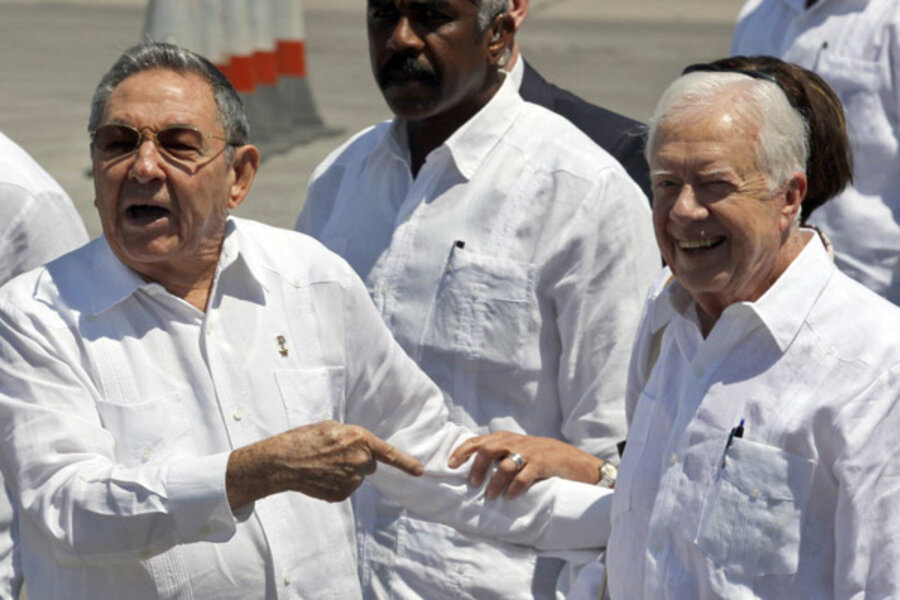Cuba: What Jimmy Carter and Calvin Coolidge have in common
Loading...
| Mexico City
Jimmy Carter and Calvin Coolidge have at least one thing in common: they are the only two US presidents to have visited Cuba since 1928.
But Mr. Carter is the sole president – sitting or past – to have visited the island nation since Fidel Castro took power in 1959, putting the restive peacemaker in a unique position to help thaw the 52-year-old freeze between the US and Cuba, which he attempted this week on a three-day trip to Havana.
Unlike Carter's first visit in 2002 – when there was little hope that relations would improve while President George W. Bush was in office – this visit takes place in the context of President Obama's efforts to engage with Cuba by easing restrictions on travel and remittances. That provides a unique opportunity for Carter to leverage his relationship with the Castro brothers to solve one of Washington's most intractable foreign policy issues.
IN PHOTOS: Cuba's underground economy
Many media reports cast Carter's trip in a negative light because he failed to secure the release of jailed US contractor Alan Gross, who was recently charged with espionage for providing Internet access to Cubans. While Carter isn't bringing back Mr. Gross, merely bringing back a direct message from Mr. Castro to Washington could be valuable, say Cuba specialists.
“Perhaps the most important outcome is if President Carter comes back and talks to President Obama,” says Philip Peters, a Cuba expert at the Virginia-based Lexington Institute.
Carter's aims in Cuba
At the same time that Obama has reached out, Cuba has taken steps to liberalize. Earlier this month, the government released the last of 75 prisoners rounded up in the so-called “Black Spring” of 2003. President Raúl Castro has also opened up the economy to a greater degree of private enterprise.
It was Raúl, too, who invited Carter for this week's visit, which included meetings with both Castro brothers as well as leading dissidents, including the blogger Yoani Sanchez. Carter also met with Mr. Gross, who was sentenced earlier this month to 15 years in prison. The US has said that no improvements in bilateral relations can be made until he is freed.
Gross' continued detention is a blow to those who had hoped he would fly out with Carter – especially after the 39th president secured the release of an imprisoned American in North Korea last year.
But the setback will likely not dissuade the 2002 Nobel Peace Prize winner from forging on. “He looks for places where he thinks he can make a difference,” says Professor Peters. “It seems to me that Cuba is a place where he can do some diplomatic troubleshooting.”
Indeed, Carter's drive to serve as unofficial US peacemaker to the world is what has made him the sole president to visit Cuba in the past half-century – and under very different circumstances from 1928, when President Coolidge addressed the Pan American Conference at Havana and talked about an “independent, free, prosperous, peaceful” Cuba.
“The reason that no other former president has gone is because no other former president has been quite as active as President Carter in trying to help mediate difficult international conflicts,” says William LeoGrande, a Cuba expert and dean of the School of Public Affairs at American University.





